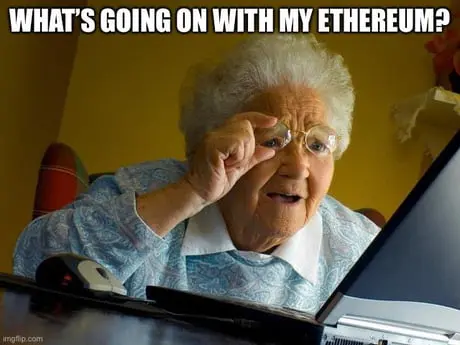You may have heard that the Ethereum Merge event is coming and might have asked yourself that question. We’re here to answer it. As you know by now that Ethereum is a blockchain based medium of exchange. The mechanism that works behind the scenes to power this blockchain is called ‘proof of work’. It’s through this mechanism that Ethereum transactions are processed and validated. The merge event will cause the current blockchain (called Ethereum Mainnet) to merge with a separate chain (called Beacon Chain) which will process transactions using ’proof of stake’ mechanism going forward.
To answer this question, one must understand the difference between the underlying mechanisms we just mentioned earlier.
Proof of work: the current mode of validating transactions on the Ethereum blockchain requires numerous computers (nodes) owned by crypto miners to constantly solve complex problems in order to verify and process transactions on the network. This method, though effective, is extremely power intensive and has raised brows when it comes to the environmental footprint it leaves behind.

Proof of stake: after the merge, the blockchain will utilize this new method to validate transactions by relying on trusted entities called the ‘validators’. This will allow Ethereum to limit the number of nodes that can possibly validate the transactions hence limiting the environmental impact. The model is called proof of stake because the validators need to ‘stake’ 32 ETH just to join the queue seeking to be a part of the new system. This requirement is to prevent malicious actors from becoming node operators as they will stand to lose their staked ETH.
The impact of the merge would be felt by those who have been mining Ether all this time and currently do not have the means to stake 32 ETH or are waiting to be qualified as trusted nodes. Their source of revenue from Ethereum will be stemmed and will have to mine other crypto assets which still utilize proof of work. There are other drawbacks for reducing the number of nodes processing the transactions as well. For one, Ethereum will no longer enjoy the scale of decentralization it has thus far and having fewer nodes could also potentially make it more prone to hacker attacks.
Short answer, nothing. Ethereum Foundation has made it very clear that the users don’t need to do anything to their digital assets on Ethereum, either before or after the merge. Your NFT’s will continue to remain in your wallet and you will be able to utilize them as you have been all this time. So be wary of any scams or schemes telling you otherwise and do not get tricked into losing your assets.

A special consideration needs to be given to the fact that there are people in the Ethereum community who are not on board with the idea of the merge and believe that continuing the ‘proof-of-work’ model is the way to go. Some of these detractors plan to make a fork of the blockchain and continue with a spin-off of the existing Ethereum on a chain separate from the Ethereum Mainnet. This could result in duplicate tokens (such as NFT’s) which exist as copies on these splinter chains. As a result of this, some scammers might attempt to sell these duplicate tokens to unsuspecting buyers which may not be authentic. Therefore, users will need to ensure the validity of their token purchases as to whether they belong on Ethereum Mainnet or not before buying.
The Ethereum blockchain has decided to adopt a new model of processing transactions whereby instead of allowing and rewarding everyone choosing to be a miner on the blockchain, it will only allow a handful of miners who have staked a substantial sum of Ethereum in exchange for becoming a trusted validator on the blockchain. This change requires the blockchain to be updated where the existing Ethereum blockchain is merging with another blockchain that supports the new model of processing transaction. This event is largely known as The Merge and is dubbed a huge milestone in the history of Ethereum.